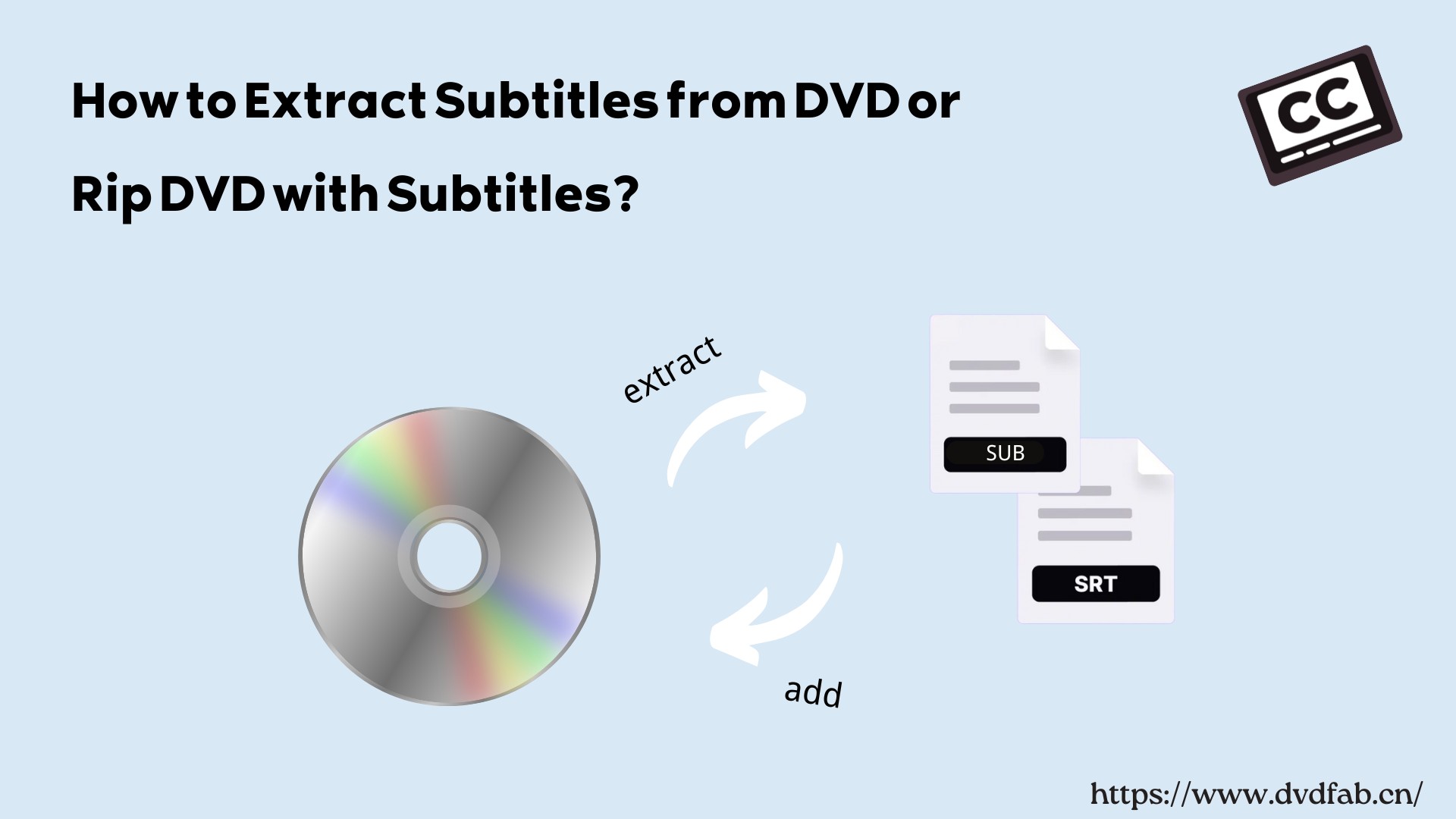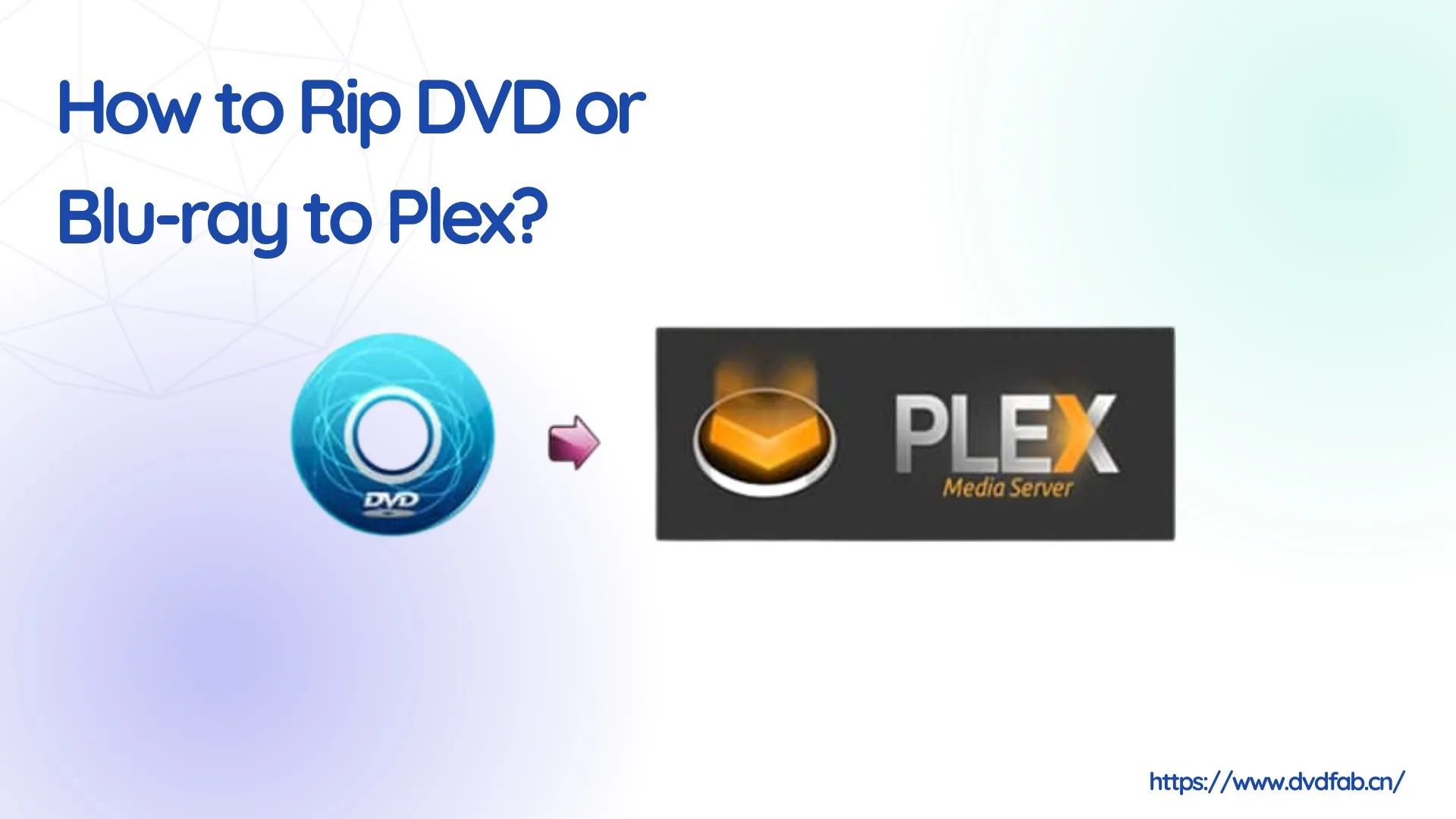DVD Size: Everything You Need To Know About Capacity And Formats
Summary: How big is a DVD? What affects its capacity and storage? What's the difference between single-layer and double-layer discs? Read this article for an in-depth guide to DVD size and capacity, and the best DVD ripper to manage your DVD storage.
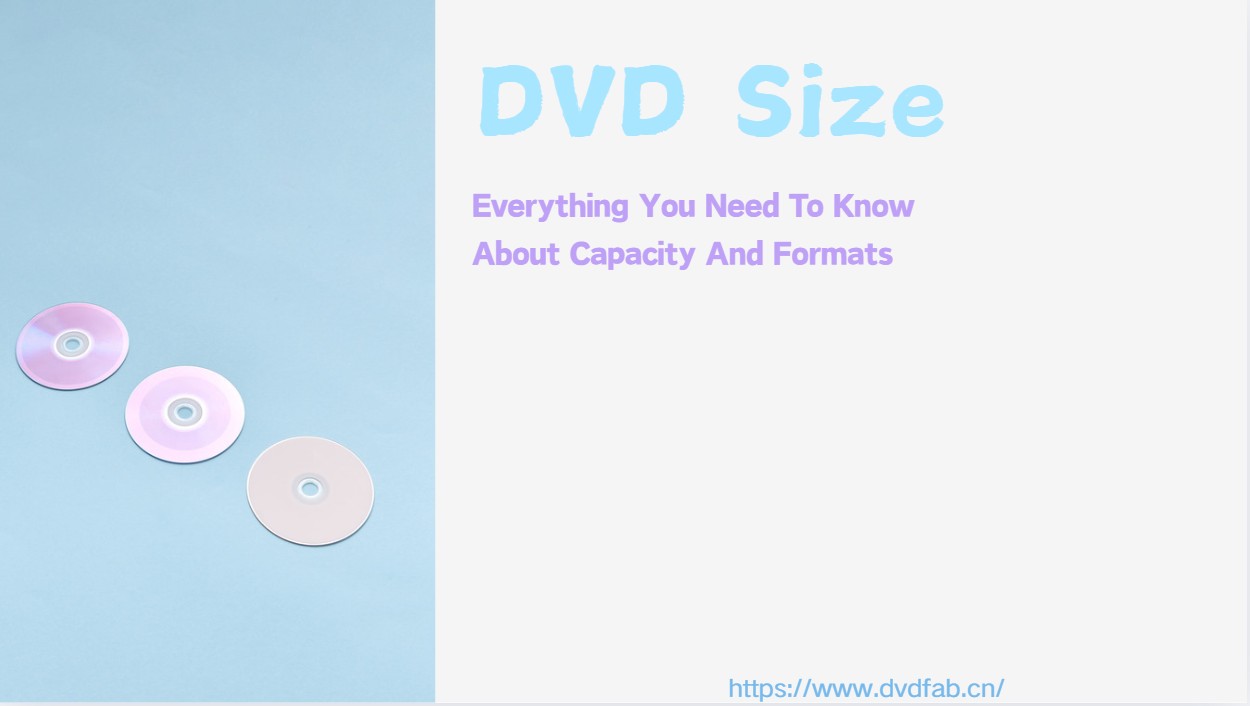
No matter how alike they look, not all DVDs are the same. Among the most essential aspects in selecting the right DVD for any kind of project is the DVD size or the amount of data it can store. If you are looking for a new DVD to burn, you must wonder how many DVD formats are available, what sizes are good for an amount of data, or what type of DVD you should go for.
There are a variety of DVD models available, each with a distinct physical size and storage capacity. As a result, there may be a great deal of uncertainty concerning DVD sizes. For example, you may not be aware of the sort of DVD that can carry a certain amount of information. Dealing with insufficient storage when you are ready-to-burn DVD can be frustrating, but not when you know well aware of DVD storage capacity and formats.
How Big is a DVD?
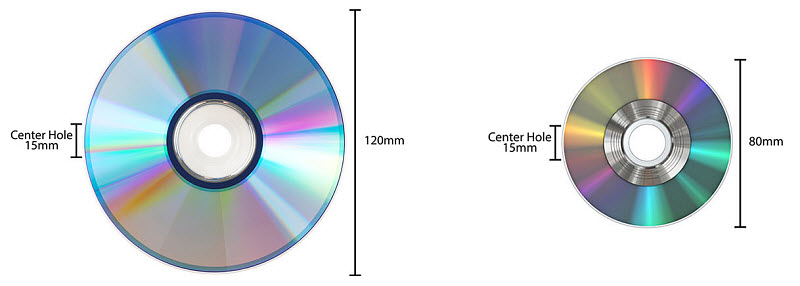
The standard dimensions for a DVD (Digital Versatile Disc) are as follows:
- Diameter: 120 mm (4.7 inches)
- Thickness: 1.2 mm
These dimensions apply to the most common single-layer, single-sided DVDs. There are also variations like dual-layer or dual-sided DVDs, but the physical dimensions of the disc remain the same. The difference lies in the capacity, with dual-layer DVDs offering more storage. Mini DVD, which has a diameter of 80 mm (3.149 inches) and a thickness of 1.2 mm (0.047 inches), has the same 15 mm inner diameter as standard DVDs.
If you're talking about a DVD case, those usually follow a standard size as well:
- Standard DVD case: 190 mm x 135 mm (7.5 inches x 5.3 inches)
DVD Types and DVD File Size
At this point you may not ask "what is a DVD", but what type of DVDs are there and how do they differ in terms of storage capacity. There are different sizes of DVDs, often classified into four common categories; DVD-5, DVD-9, DVD-10 and DVD-18.
DVD-5
A DVD-5 is a single-layer DVD that can store up to approximately 4.7GB of data on a single disc. In terms of videos, it takes around 120 to 133 minutes of video, depending on compression.
DVD-9
Type DVD-9 consists of two layers; a solid layer and a semi-transparent layer. It can store up to 8.5GB of data on a single side. Depending on the compression, it can store around 240 minutes of video depending. It can hold almost twice the amount of data as a DVD-5 and is often utilised to maintain a higher bitrate or quality than would be possible on a DVD-5.
DVD-10
DVD-10 is a two-sided DVD that can carry up to 9.4GB of data on each side, which makes it a total of 18.8GB. In terms of videos, it makes around 266 minutes of video, depending on compression. Unlike DVD-9 which comes with two layers, a two-sided DVD needs to be flipped to display or burn the data on each side.
DVD-18
DVD-18 is one of the largest types of DVD discs on the market, with a double-sided, double-layer structure and a total storage space of up to 17GB. Each side contains two layers of data areas, which need to be manually turned over when in use to achieve a huge data carrying capacity. It's able to store up to around 480 minutes of video. DVD-18 is not common in daily life, but it still has its unique value in professional publishing, data storage and other fields.
|
DVD Type |
DVD Sides |
DVD Layers |
DVD Capacity In GB per side or layer |
DVD Capacity In Minutes |
Supported Formats | Use Cases |
|
DVD-5 |
1 |
1 |
4.7GB |
120 to 133 minutes |
DVD+R/RW, DVD-R/RW | Regular data/video storage |
|
DVD-9 |
1 |
2 |
8.5GB |
240 minutes |
DVD-R DL, DVD+R DL | Long movies / high-definition videos |
|
DVD-10 |
2 |
1 |
9.4GB |
266 minutes |
DVD+R/RW, DVD-R/RW | Large-scale data archiving |
| DVD-18 | 2 | 2 | 17GB | 430~480 minutes | DVD+R | Long-term / large-volume professional storage |
If you're burning a standard-length movie or everyday files, a single-layer DVD-5 (4.7GB, ~120–133 min; DVD+R/RW, DVD-R/RW) is the simplest and most compatible pick. Need longer run time or a higher bitrate on one side of the disc? Go for DVD-9 (dual-layer, 8.5GB, ~240 min; DVD-R DL/ DVD+R DL). For larger data sets where flipping the disc is acceptable, choose DVD-10 (two-sided single-layer, 9.4GB total, ~266 min; DVD+R/RW, DVD-R/RW). When maximum capacity matters and you’re okay with a rarer, professional-leaning option that also requires flipping, use DVD-18 (two-sided dual-layer, 17GB, ~430–480 min; typically DVD+R).
How Many DVD Formats Are Available?
The format basically determines the compatibility of the data on the disc to the system or a platform you wish to play it on. Despite the sizes of DVDs, there are various formats, each of which enables a different storage capacity.
Here are some commonly used and preferred DVD formats you must know about before moving onto DVD discs size. The plus and minus in formats refer to the physical formats. DVDs with +R or +RW formats are compatible with commercial DVD-ROM players.
DVD+R and DVD-R:
- These discs can only be recorded once.
- The recorded data becomes permanent on the disc.
- DVD capacity in GB for these discs is up to 4.7GB.
DVD+RW and DVD-RW:
- RW is abbreviated as “re-writable”.
- These discs are re-recordable.
- You can modify data on these DVDs.
- The data can be deleted, and rewritten several times.
- DVD storage capacity for +RW and -RW DVDs is up to 8.54
DVD+R DL and DVD-R DL:
- DVD+R DL and DVD-R DL are both dual-layer discs.
- The writing and rewriting on these DVDs take a little longer because of their dual-layer.
- +R DL and -R DL DVD storage capacity is up to 8.50GB.
Factors Affecting DVD Discs Capacity and Size
The dimensions of DVD discs have nothing to do with DVD size and DVD capacity. There are a few factors that directly impact the DVD storage capacity, for instance;
- DVD layers: there are single and dual-layer DVDs. Each layer carries a specific amount of data, enhancing the DVD capacity.
- DVD sides: DVD size is increased by the number of sides it has. There are single and dual side DVDs. The dual side is a hi capacity DVD in comparison to the single-sided.
Here are the types of DVDs and their associated capacities:
- Single-layer, single-sided DVD: 4.7 GB
- Dual-layer, single-sided DVD: 8.5 GB
- Single-layer, double-sided DVD: 9.4 GB
- Dual-layer, double-sided DVD: 17 GB
If you are looking for a high capacity DVD, DVD+R DL comes with high burning speed and up to 8.5GB of data storage capacity. On the other hand, blu-ray discs offer a massive amount of DVD capacity in GB.
DVDFab DVD Ripper : Your Assistant for Managing DVD Capacity
DVD size and capacity are fixed, often leaving you struggling with limited space for videos, backups, or even just to organize your content efficiently. A DVD ripper can easily convert physical discs into compact digital files, allowing you to compress videos, split content across multiple DVDs, or store your entire library on a hard drive or in the cloud.
DVDFab DVD Ripper has the capability of converting DVDs to MKV and other formats. Its passthrough video and 5.1 AC3 audio features are a huge plus for movie enthusiasts who want to enjoy lossless visual quality in their home theatre.
- Compresses video size while preserving the quality.
- Rips any DVD to 1000+ video & audio formats.
- GPU-accelerated DVD ripping speeds up the process by 50x.
- Removes any old or new disc encryption.
- Built-in video editor and menu settings to customize.
- Supports Batch DVD to digital file conversion.
How To Rip DVD to Other Formats With DVDFab Ripper
Step 1: Download and Launch DVDFab Ripper
Step 2: Choose Ripper Module and Add Files
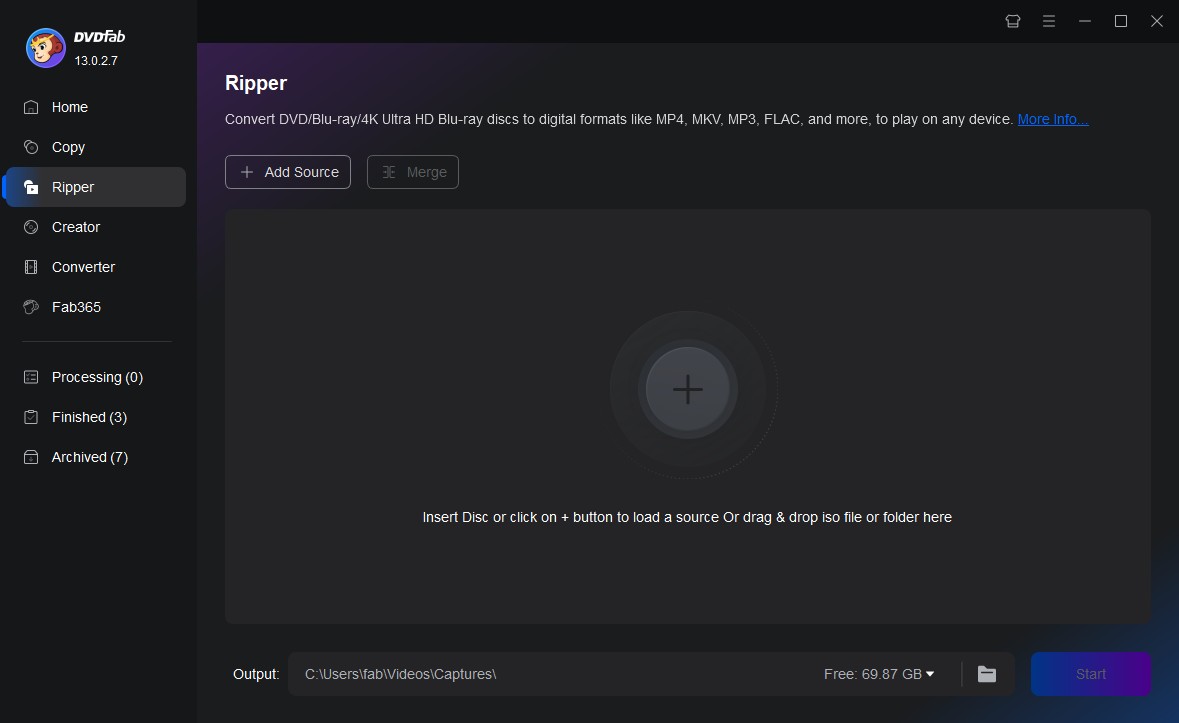
Once you install the DVD ripper, launch the application and click Ripper module on the main screen. In any case, put the DVD disc you want to rip into the optical drive or navigate to it using the Add button if it is already in the drive and not selected.
Step 3: Choose Profile and Configurate Other Settings
To convert DVD to MP4 or any other digital formats, click "Choose Other Profile". In the profile tab, choose "Format", and then "Video" from the drop-down menu.
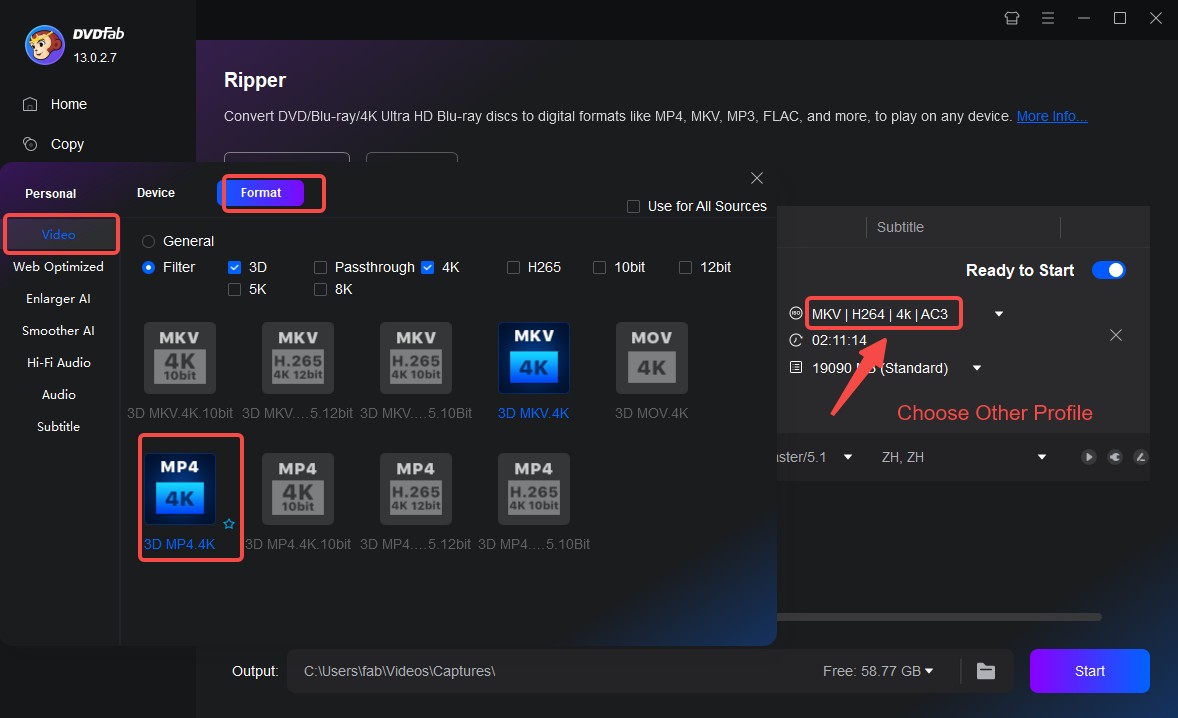
Once you upload your video and choose profiles, you can customise the video and audio characteristics to meet your own requirements. with "Advanced Settings", "Video Edit" and "Trim" feature.
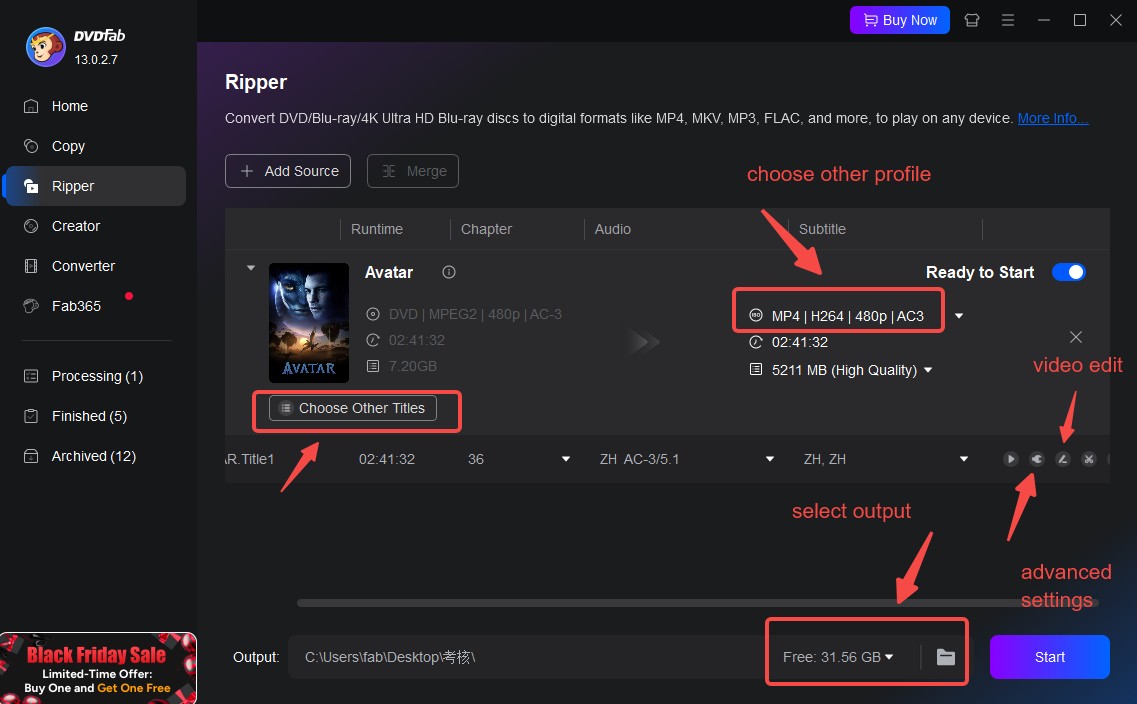
Step 4: Click Start to Rip
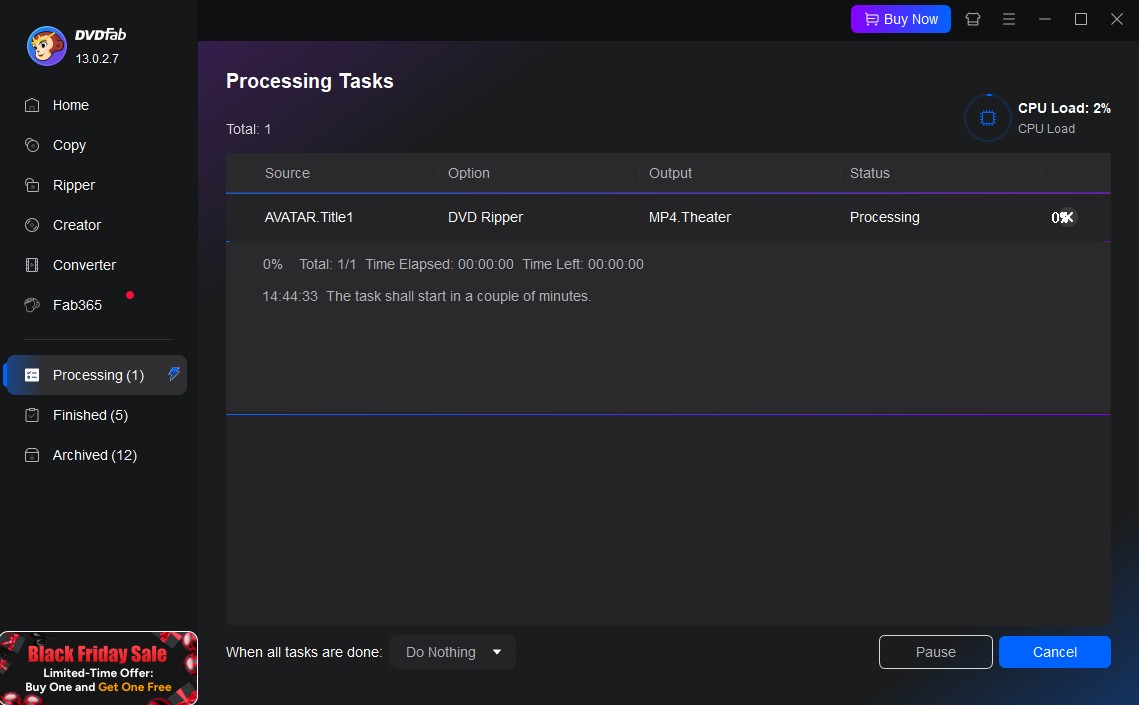
FAQs
Burning is the term used to describe the process of copying music, images, and movies from your computer to a blank CD or DVD. On the other hand, ripping is the term used to describe the process of copying music, photos, and movies from a CD or DVD to your computer. Both of these tasks require ripping or copying softwares.
DVD-R and DVD+R are formats that are essentially similar to one another. Both -R and +R discs look similar in appearance and are compatible with most DVD-ROM players and burners. The sole difference between the two formats is the method by which they detect the placement of the laser beam on the disc to be used for reading data.
More than DVD discs size, the format of the dics matter when it comes to ripping. DVD-R discs are the most compatible for burning, while DVD+R discs are the second most compatible option. DVD-RW/+RW discs are re-writable disc. It means that the data can be erased and re-written on several occasions. However, they are not always compatible with all DVD players.
Conclusion
We've complied a comprehensive guide for you to learning DVD size, DVD capacity and DVD format, etc. It's obvious that a DVD's capacity is limited, thus a reliable DVD ripping tool is very crucial to manage you disc collection. With advanced settings and ultimate decryption capability, DVDFab DVD Ripper converts any sizes of DVD easy and fast. Whether you want to back up precious content or save storage space, it provides a smart solution to make the most of your DVD collection.

